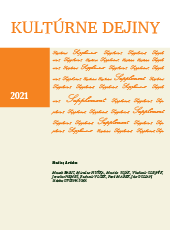Príčiny vzniku stredovekých mendikantských kláštorov na Slovensku (Úvod do problematiky)
The Triggers which Caused the Founding of Medieval Mendicant Monasteries in Slovakia (An Introduction to the Issue)
Author(s): Miroslav HuťkaSubject(s): History, Architecture, Middle Ages, Theology and Religion
Published by: VERBUM - vydavateľstvo Katolíckej univerzity v Ružomberku
Keywords: Mendicants; Beginnings; Monasteries; Middle Ages; Slovakia;
Summary/Abstract: The arrival of mendicant orders into the environment of medieval towns is a complex issue compounded by a lack of relevant written sources in the Kingdom of Hungary. Solving hypotheses is therefore challenging. What cities did the mendicants choose? What was important when choosing the location for a new monastery? However, even fragments of information can be of use when solving some problems related to the establishment of mendicant monasteries. Both the direct and the comparative method will be used to look into the issue of choosing locations for the monasteries. The goal will be to attempt to clarify the strategy and ways of introducing mendicant orders into the environment of the medieval towns of the Kingdom of Hungary, with special focus on the territory of contemporary Slovakia, using all available sources. In the Middle Ages, the territory of contemporary Slovakia hosted five Dominican, about seventeen Franciscan, four Augustinian and two Carmelite monasteries. Franciscan dominance is clearly visible. They also established two convents (The Order of Saint Clare) in Trnava and Bratislava. Was this predominance coincidental or did it reflect the situation in all of the Kingdom of Hungary? A mendicant order with a certain peculiarity was the Augustinians, who were originally formed by merging hermit orders, which probably manifested itself in the establishment of the monastery in Veľký Šariš, where the original order of Williamites settled after 1256. It is also illustrated by the location of the monastery in Sátoraljaújhely. A point of interest is also the issue of mendicant monasteries in village environments, such as Hrabkov or Slovenská Ľupča. The strategy of mendicants penetrating into already established cities was a relatively complicated issue. In commercial and mining towns, pastoral activity played an important role, disrupting the usual culture with the dominant position of the town priest. But there were also attempts at civic activity, for example being involved in city hospitals.
Journal: Kultúrne dejiny
- Issue Year: 12/2021
- Issue No: Supplement
- Page Range: 31-49
- Page Count: 19
- Language: Slovak

